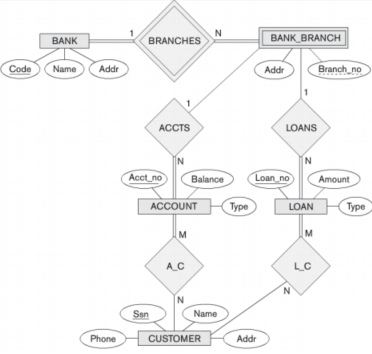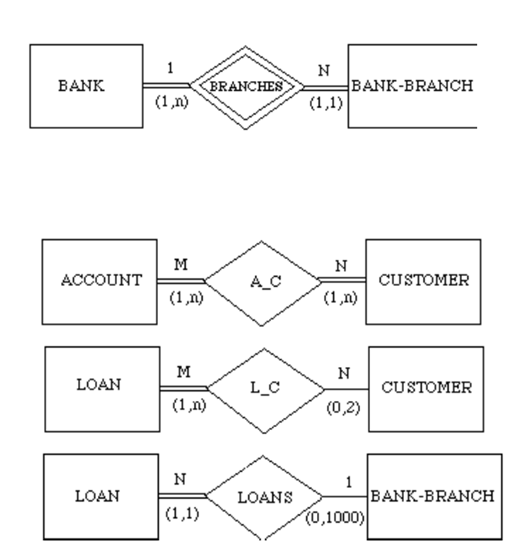
Database Systems 6th Edition by Ramez Elmasri, Shamkant B. Navathe
Edition 6ISBN: 0136086209
Database Systems 6th Edition by Ramez Elmasri, Shamkant B. Navathe
Edition 6ISBN: 0136086209 Exercise 3
 Figure 7.30
Figure 7.30-Consider the ER diagram shown in Figure 7.30 for part of a BANK database. Each bank can have multiple branches, and each branch can have multiple accounts and loans.
(a) List the strong (nonweak) entity types in the ER diagram.
(b) Is there a weak entity type? If so, give its name, its partial key, and its identifying relationship.
(c) What constraints do the partial key and the identifying relationship of the weak entity type specify in this diagram?
(d) List the names of all relationship types, and specify the (min,max) constraint on each participation of an entity type in a relationship type. Justify your choices.
 (e) List concisely the user requirements that led to this ER schema design.
(e) List concisely the user requirements that led to this ER schema design.(f) Suppose that every customer must have at least one account but is restricted to at most two loans at a time, and that a bank branch cannot have more than 1000 loans. How does this show up on the (min,max) constraints?
Explanation
(a) Entity types: BANK, ACCOUNT, CUSTOME...
Database Systems 6th Edition by Ramez Elmasri, Shamkant B. Navathe
Why don’t you like this exercise?
Other Minimum 8 character and maximum 255 character
Character 255



